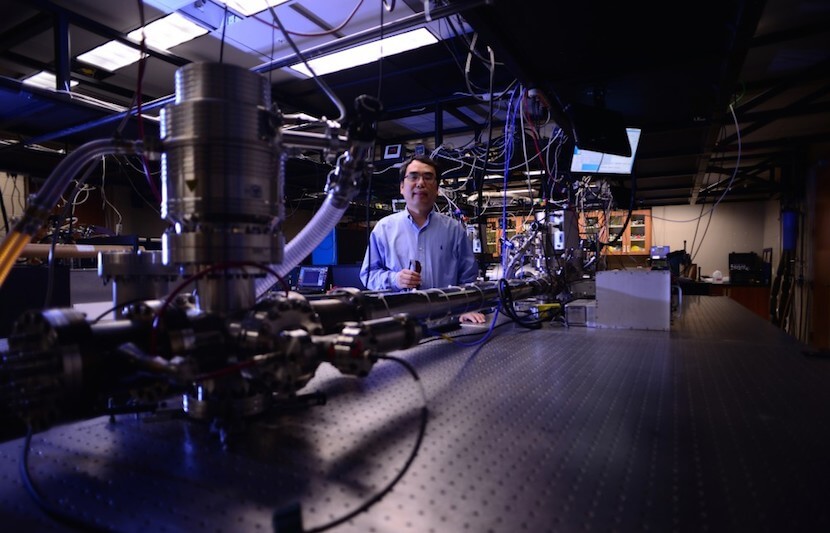A team of researchers at the University of Central Florida (UCF) has succeeded in generating a 53-attosecond X-ray flash, which is billed as “the fastest light pulse ever developed.”
The team beat the record it set in 2012, during which it demonstrated a 67-attosecond extreme ultraviolet light pulse.
The recent study is published in Nature Communications.
The research was led by Professor Zenghu Chang, a UCF Trustee Chair Professor in CREOL, The College of Optics & Photonics, and the Department of Physics.
This new development will enhance scientists’ ability to capture images of fast-moving electrons in atoms and molecules, thus enabling advancements in solar panel technology, logic and memory chips for mobile phones and computers, and in the military.
An attosecond translates to one-quintillionth of a second. To put this in perspective, it takes about 150 attoseconds for a single electron to circle the nucleus of an atom. In 53 attoseconds, light travels one-thousandth of the diameter of a human hair.
These new light pulses are revolutionary because they are not only shorter in duration, but also in wavelength. This allows the pulses to reach a spectral region called the “water window,” where carbon atoms absorb strongly, but water does not.
“Such attosecond soft X-rays could be used to shoot slow-motion video of electrons and atoms of biological molecules in living cells to, for instance, improve the efficiency of solar panels by better understanding how photosynthesis works,” Chang said in a statement.
This new x-ray technology will show scientists which electrons move in which atoms. With this knowledge, researchers could initiate the development of next-generation logic and memory chips for mobile phones and computers, which are expected to be 1,000 times faster than those currently in use.
Although this revolutionary technology is capable of benefiting many fields, the largest interest comes from the U.S. Department of Defense.
“Attosecond light pulses are powerful tools for studying how electrons behave in molecules and materials,” Chang told The University Network (TUN). “By observing and controlling electron motion with attosecond light pulses, one may find new ways to significantly increase the speed of electronics and sensors.”
Needless to say, speed of communication and information processing is vital to the military.
It is no surprise then that U.S. military programs are responsible for the majority of the funding for this research.
“It is worth mentioning that those agencies who funded us, DARPA, the Army Research Office, and the Air Force Office of Scientific Research, are among the main resources of basic research in the U.S.,” Chang told TUN (emphasis by Chang). By DARPA, Chang is referring to the Defense Advanced Research Projects Agency, an agency within the U.S. Department of Defense that is responsible for making “pivotal investments in breakthrough technologies for national security.”
Chang and his team spearheaded attosecond light pulse research, and he has a published book— “Fundamentals of Attosecond Optics”—on the topic.
Additional members of Chang’s team include Jie Li, Xiaoming Ren, Yanchun Yin, Andrew Chew, Yan Cheng, Eric Cunningham, Yang Wang, Shuyuan Hu and Yi Wu, who are all affiliated with the Institute for the Frontier of Attosecond Science and Technology (iFAST); Kun Zhao, who is affiliated with iFAST as well as the Chinese Academy of Sciences; and Michael Chini with the UCF Department of Physics.



